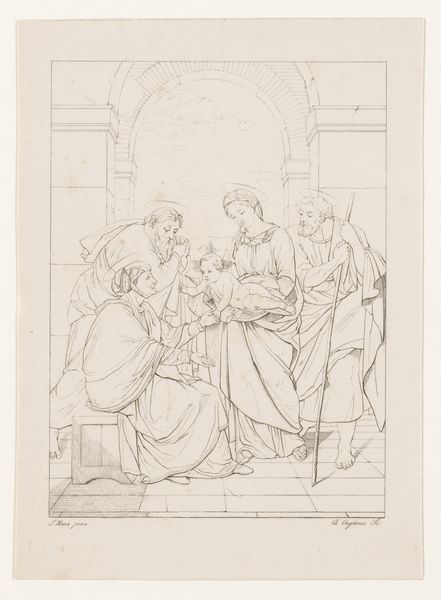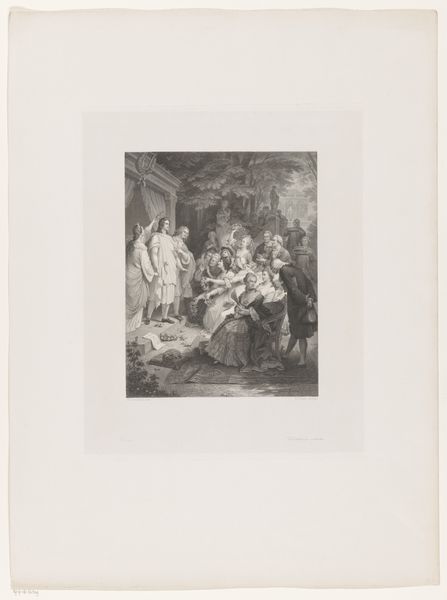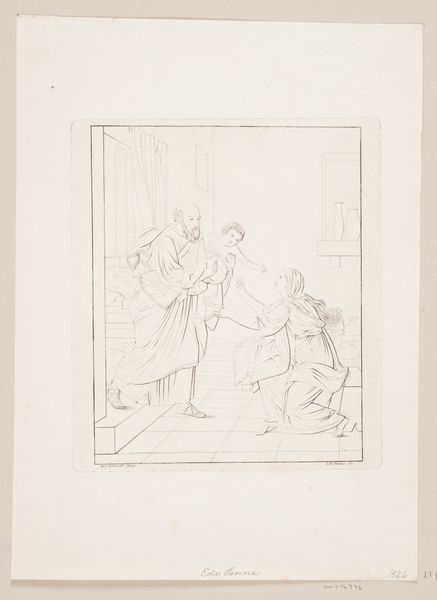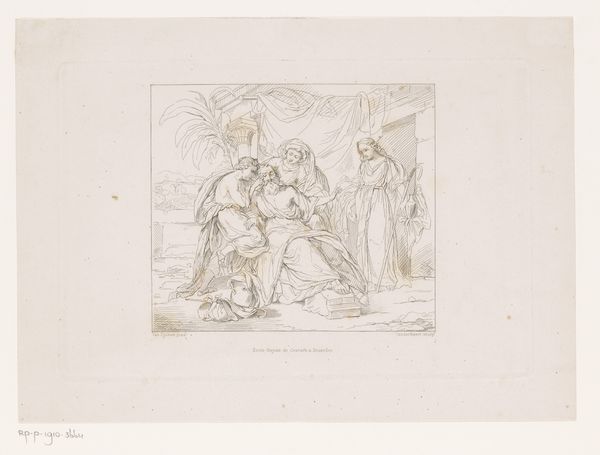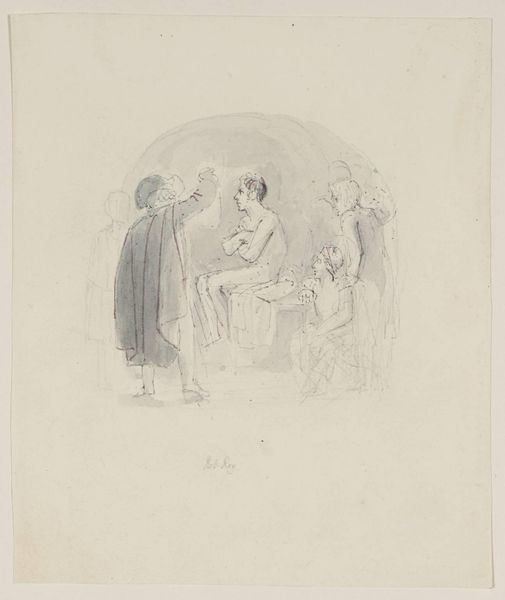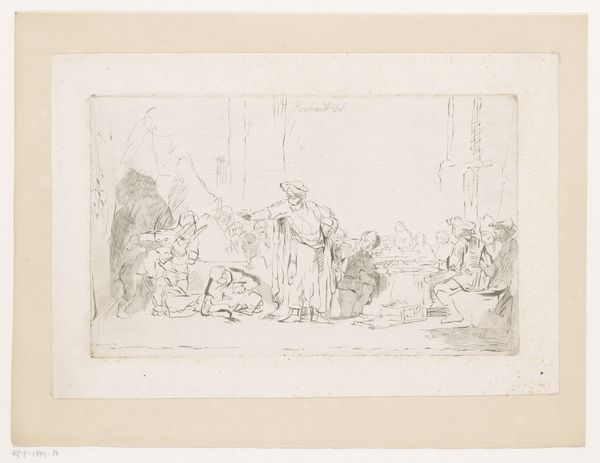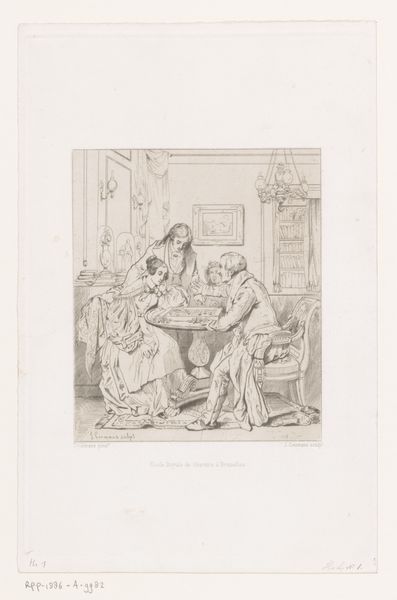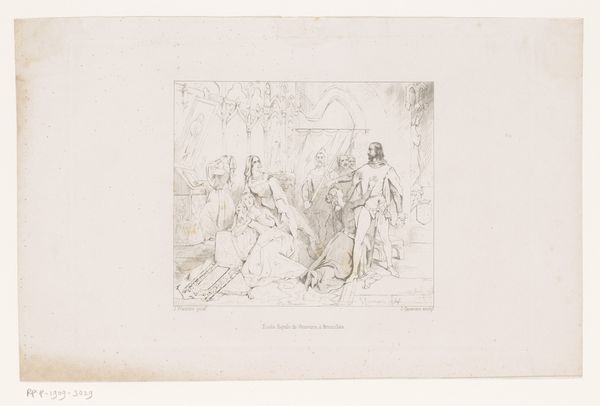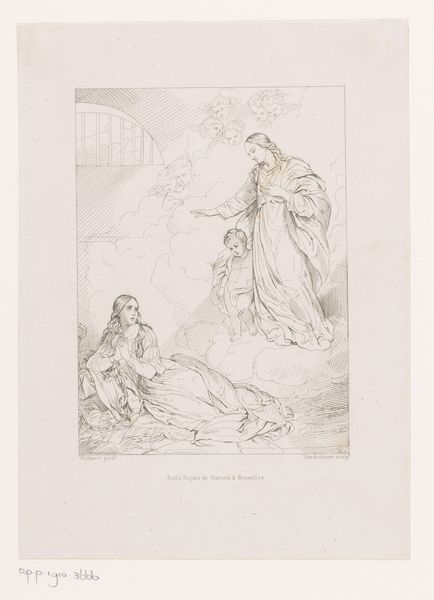
Christus ligt te slapen op de schoot van Maria, omringd door twee engelen, Jozef, Catharina, Elisabet en Johannes de Doper 1836
0:00
0:00
drawing, print, etching
#
drawing
#
narrative-art
# print
#
etching
#
etching
#
figuration
#
history-painting
#
academic-art
Dimensions: height 247 mm, width 178 mm
Copyright: Rijks Museum: Open Domain
This print, made by Henri Van der Haert, shows Christ asleep in Mary's lap, surrounded by other figures. It was made sometime before 1846, the year of the artist's death. Look closely, and you'll notice the dense network of lines used to create the image. These lines are the key to understanding how this image was made; it's an etching. The artist would have coated a metal plate with a waxy substance, then drawn through it with a needle to expose the metal. This plate was then immersed in acid, which bit into the lines, creating an image that could be inked and printed. This technique, which emerged in the 16th century, democratized image-making, allowing for the relatively quick and easy reproduction of designs. This printmaking tradition allowed artists to disseminate their work to a wider audience than ever before, contributing to the rise of a visual culture that helped shape social and political discourse. So next time you look at a print, consider the labor and the technology that made it possible, and its role in the broader history of mass production.
Comments
No comments
Be the first to comment and join the conversation on the ultimate creative platform.
